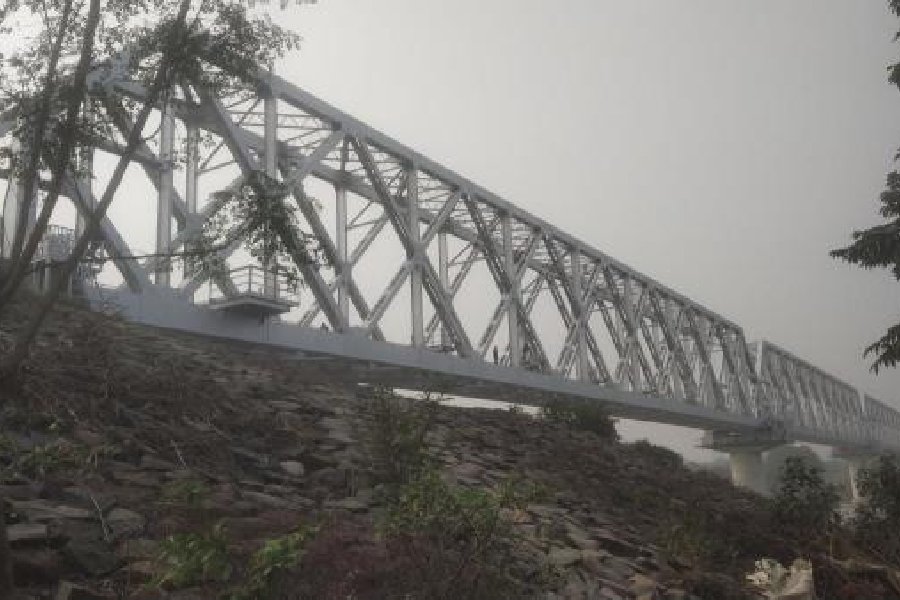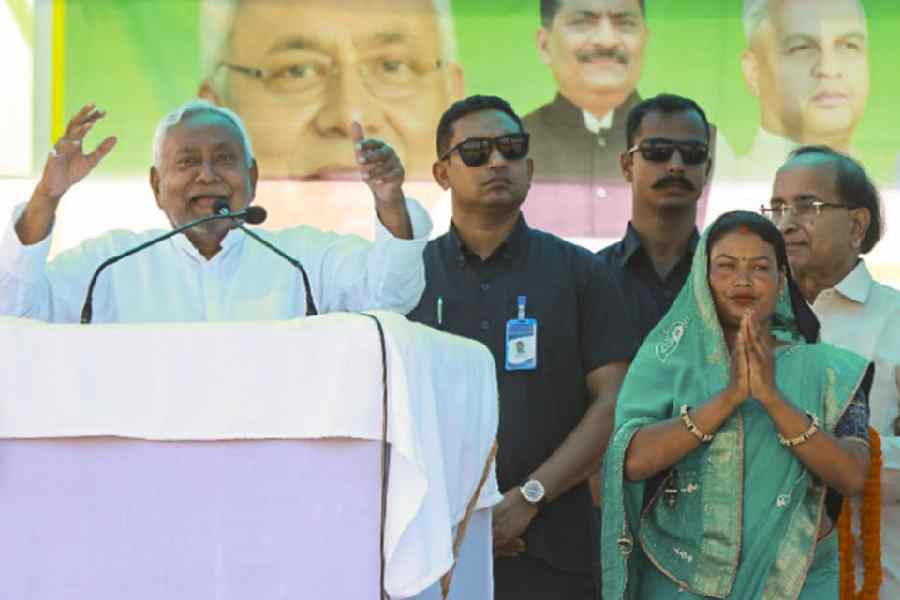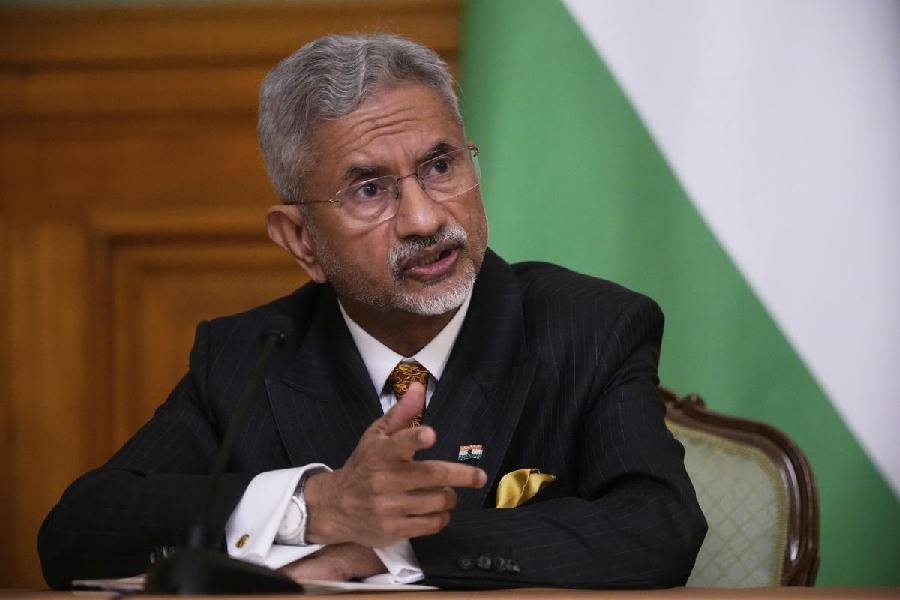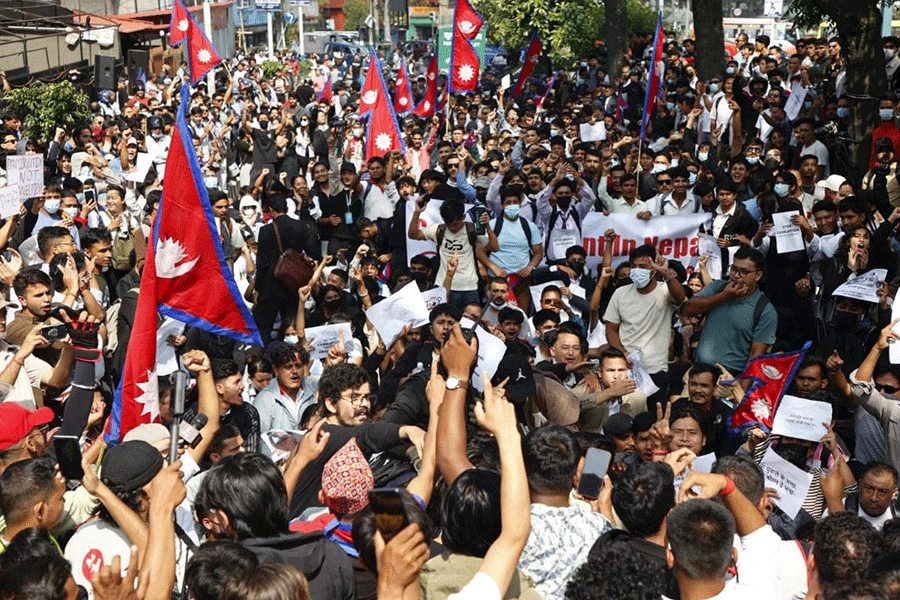The train service between north and southern parts of Bengal along an old railway route will resume on June 14, after a gap of almost six decades, as the Centre has rebuilt a new railway bridge over the Bhagirathi river and has met a longstanding demand of people in vast areas of Nadia and Murshidabad districts.
“On June 14, a weekly train between Jalpaiguri Road and Sealdah will be flagged off. It will run along the new route and move through the new Nasipur bridge, connecting Berhampore, Krishnanagar and Ranaghat,” said K.K. Sharma, the chief public relations officer of the Northeast Frontier Railway (NFR).
Sources said that from June 20, the train will run regularly. The 19-coach train with 16 AC-III bogies will depart Sealdah at 11.40pm on Fridays to reach Jalpaiguri Road at 12pm the following day.
On Saturdays, the train will leave Jalpaiguri Road at 8.30pm to reach Sealdah at 8.10am on Sunday.
“The train has been tentatively named Sealdah-Jalpaiguri Road Humsafar Express. If there is a steady demand for tickets, we will approach the higher authorities to increase the frequency of the train,” Jalpaiguri BJP MP Jayanta Roy said.
The train will stop at Naihati, Ranaghat, Krishnanagar, Berhampore Court, Azimganj, Jangipur Road, New Farakka, Malda Town, Samsi, Barsoi, Kishanganj and Aluabari Road stations.
“The alternative route could be opened because of the restoration of the tracks on the Nasipur bridge over the Bhagirathi last year, as it connects Azimganj and Krishnanagar,” said a railway official
The rail link to New Jalpaiguri through this region was suspended after the catastrophic flood of 1961, which severely damaged the railway infrastructure.
Before Independence, even the iconic Darjeeling Mail used to pass through Nadia and touch a section in Darshana, which is now in Bangladesh.
The Sealdah-Azimganj route via Ranaghat and Krishnanagar had also fallen out of use during World War II, after the tracks on the Nasipur bridge were abandoned.
On October 2 last year, railway minister Ashwini Vaishnaw inaugurated the restored Nasipur rail bridge in Murshidabad.
The original railway connection between Nasipur Road and Azimganj dates back to 1905, when a bridge over the Bhagirathi linked Azimganj with the Nalhati State Railway.
The route was also of strategic importance as it facilitated military movement from the Barrackpore and Berhampore cantonments during World War II. The bridge was either destroyed or left defunct during the war.
As of now, the north Bengal-bound trains from Sealdah either take the Dakshineswar-Birbhum route via the Vivekananda Bridge or the Naihati-Bandel route via the Jubilee Bridge.
With the revived route, trains can travel through Ranaghat, Krishnanagar and Berhampore.
“People of Nadia and Murshidabad can avail train services to north Bengal and vice versa, from stations closer to their homes, instead of making additional journeys to take trains to reach northern parts of the state,” said a Krishnanagar resident.
While the restoration of the alternative rail link has been widely welcomed, concerns remain about its utility for local passengers.
Aminur Rahaman Sarkar, secretary of the Murshidabad Railway Passengers’ Association, said: “This alternative link has reestablished the rail connectivity between Sealdah and NJP. But the first long-distance train that will be introduced will not be of any help for the people of Murshidabad, as it stops at night. We need more trains with convenient schedules.”
Additional reporting by our Jalpaiguri correspondent











